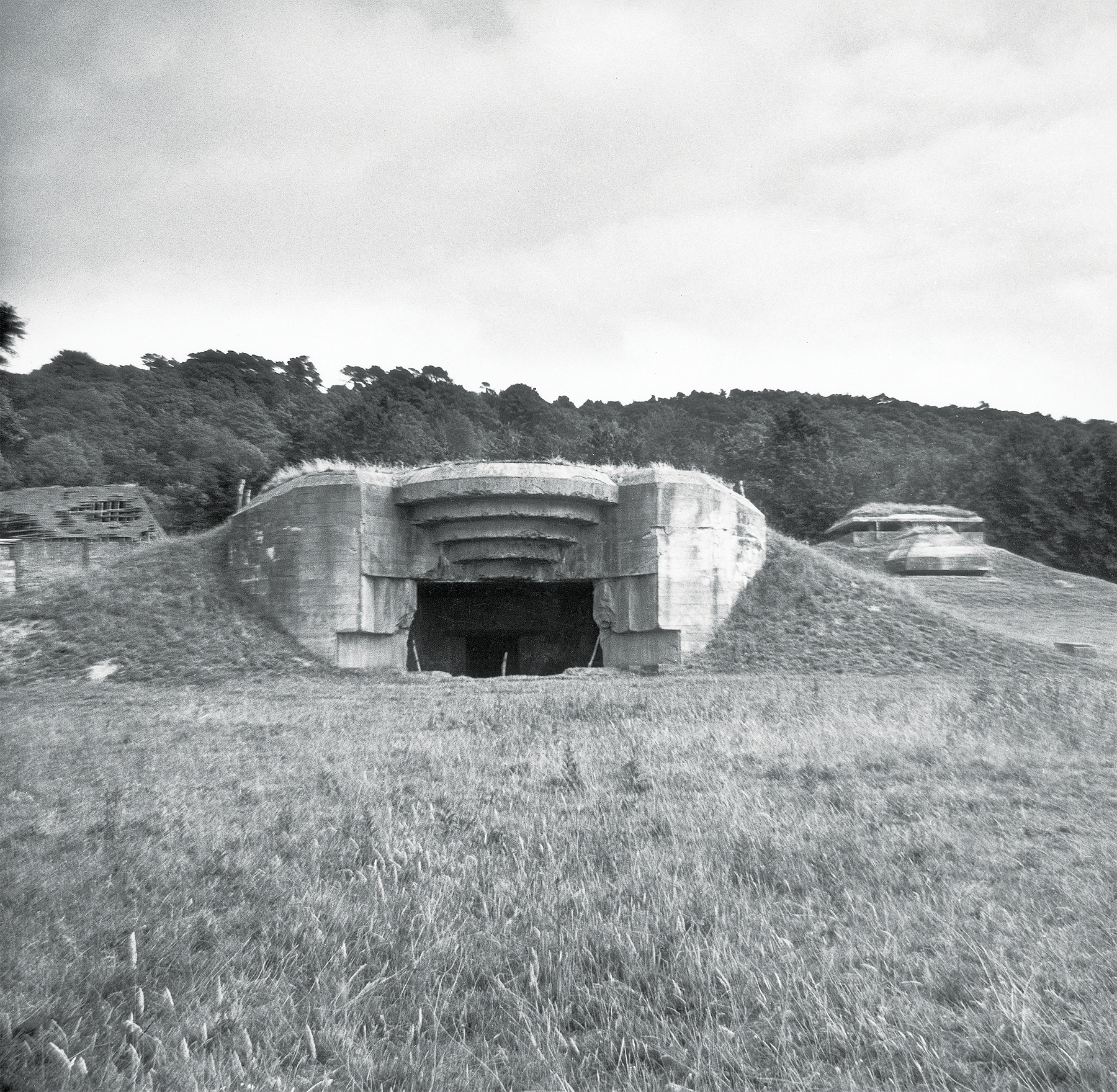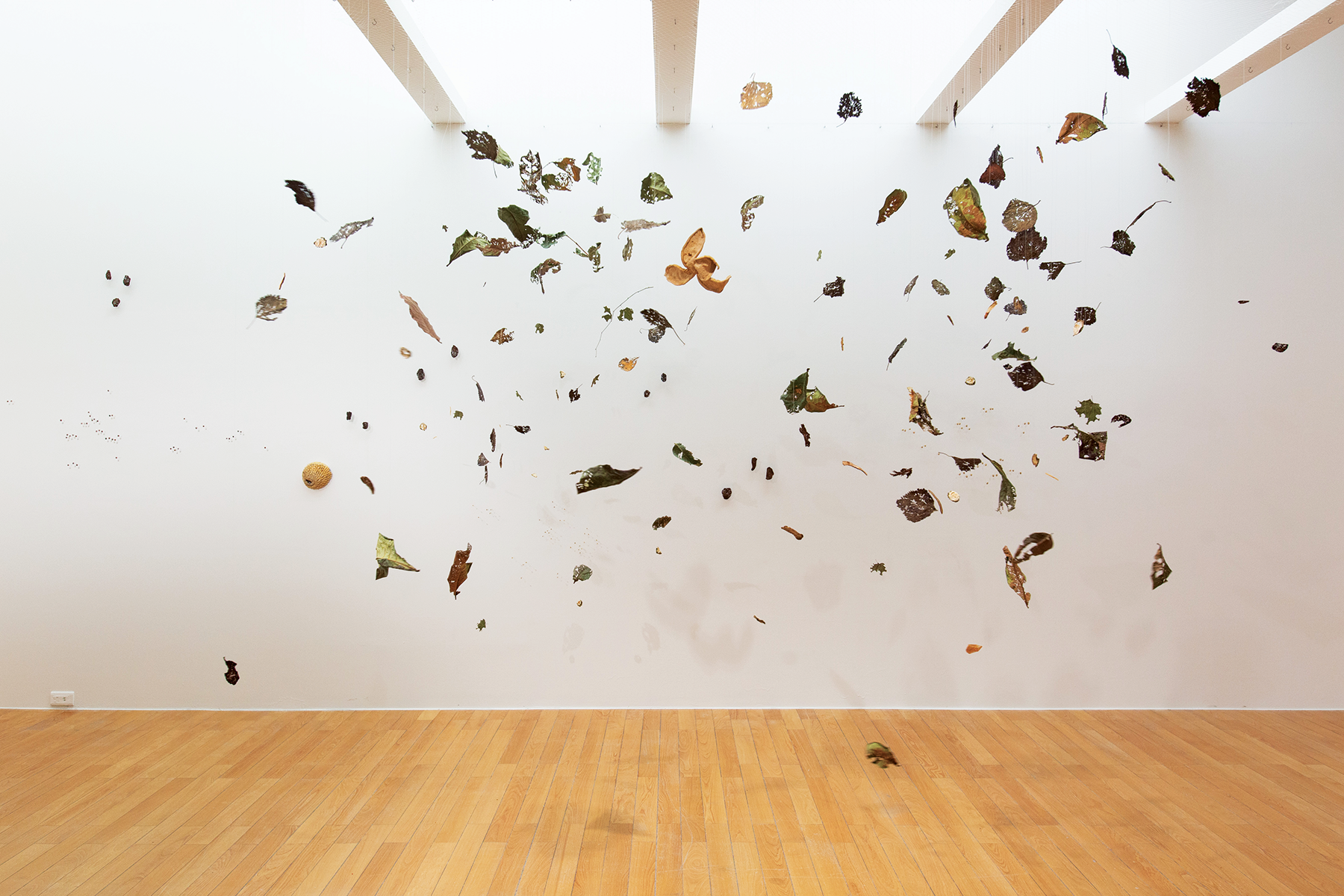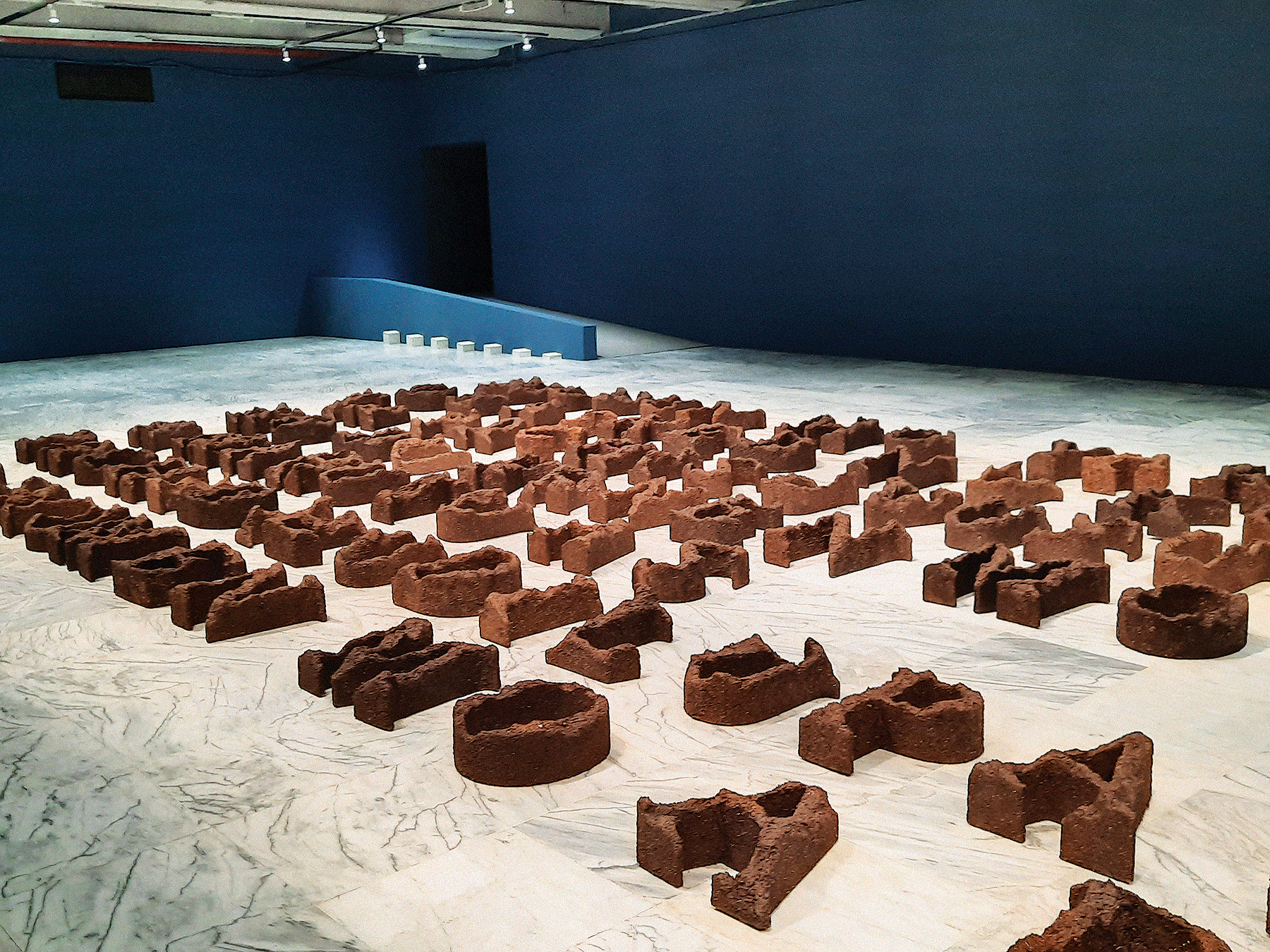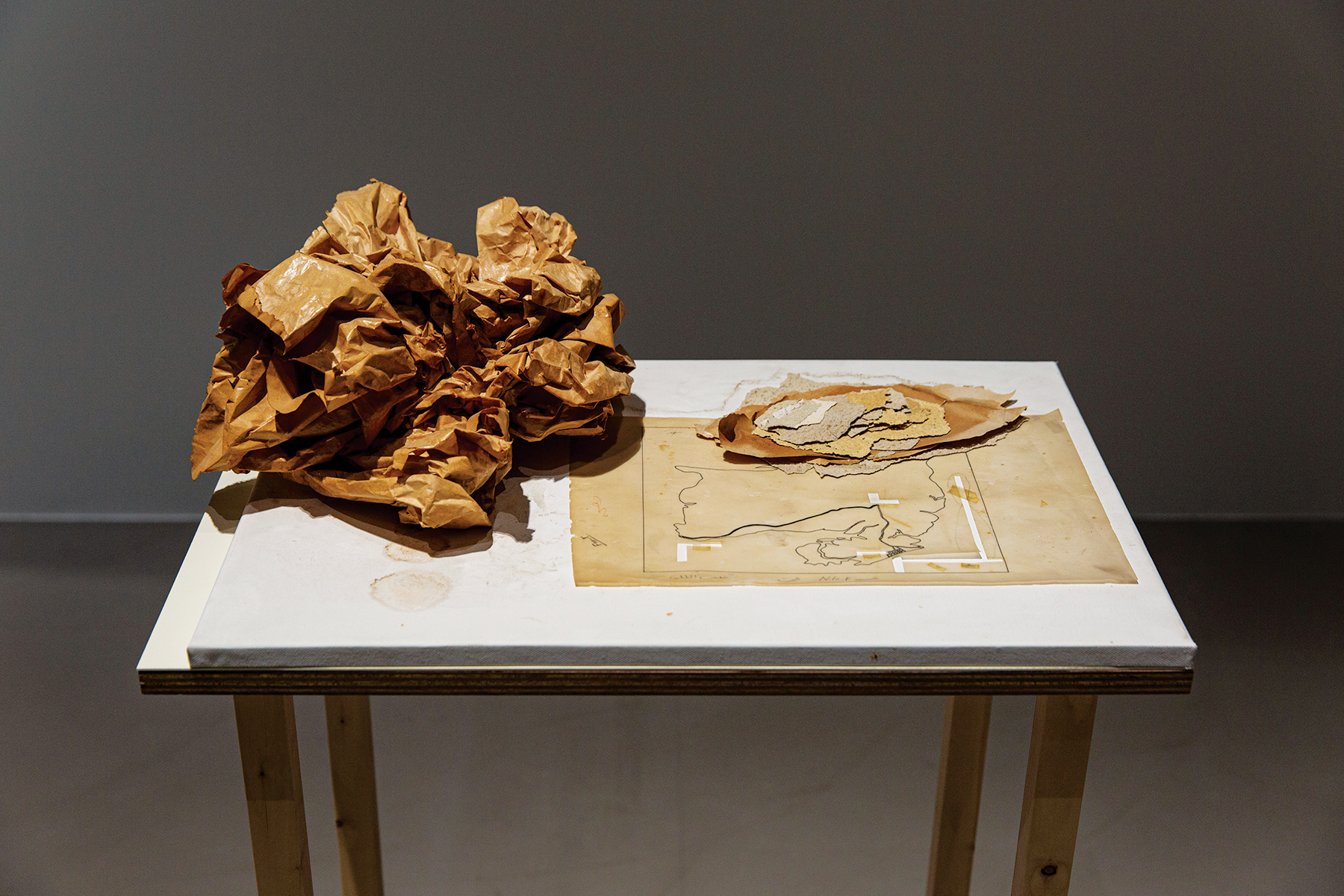A NEW WORLD
Taipei Biennial 2023 reflects on our post-pandemic world.
by Jewel Chuansu
Photos courtesy of artists and Taipei Fine Arts Museum
January 3, 2023
Director of Taipei Fine Arts Museum Jun-Jieh Wang and Taipei Biennial 2023 Curators.
This article first appeared on Art+ Magazine Issue 88. Get the latest issue now available on collectibles by artplus, Shopee, and on select stores of National Bookstore and Fully Booked.
Now on its 13th edition, the Taipei Biennial continues to facilitate a platform of interaction and exchange between local and international communities, encompassing global perspectives and regional individuality. Featuring works from over 20 cities and 58 local and international artists and musicians, Taipei Biennial 2023 runs from 18 November 2023 through 24 March 2024.
Taipei Biennial is organized and hosted by the Taipei Fine Arts Museum, Taiwan’s first museum of modern and contemporary art. The Biennial is co-urated by Freya Chou, an independent curator based in Hong Kong and Taipei; Reem Shadid, Director of Beirut Art Center in Lebanon; and New York-based senior writer and editor Brian Kuan Wood.
The theme of this year’s Biennial, “Small World,” takes off from reflections on the COVID-19 pandemic, which has had a profound impact on the global community, altering the way we perceive and experience the world around us. One significant effect of the pandemic has been the sense of the world feeling smaller. The pandemic demonstrated how closely linked we are, with the shared experience of facing a common threat.
While it has brought about numerous challenges, it has also highlighted our shared humanity and the interconnected nature of our world.
According to the curators, “Small World” suggests both a promise and a threat: “It’s a lush interior garden free from industry and economy, but also a bunker that, in its protective embrace, threatens a narrowing of possibilities. Within this context, we feel there is a need to self-reflexively consider how artists and musicians can think through their relationship to the large-scale systems that connect creative work to core audiences.”
The curators note a paradox inhabited by artists and musicians, that is, “the power to grow and to extend makes it also necessary to cultivate specific intimate spaces—localized selves and timescales that resist duplication and dissemination.” The Biennial explores how limited movement can bring expressive power.
Aside from the artworks on display in the galleries, Taipei Biennial features a cinema program, music room, live performance, artists talk, online journal, and more. This year’s Cinema Program presents short and feature-length cinematic works within a large-scale space constructed for long duration viewings in a public setting. The Music Room will be holding live events across the duration of the biennial, programmed by three hosts: dj sniff, Julian Abraham “Togar” & Wok the Rock, and TingShuo Hear Say.
Here are some of the standout artworks at Taipei Biennial 2023.
LAI CHIH-SHENG
2B205
Lai Chih-Sheng’s “2B205”, 2023, mixed media installation. Commissioned by Taipei Biennial 2023.
Lai Chih-Sheng’s practice engages with artificiality and absurdity through creating interventions in mundane spaces. For Taipei Biennial, he transformed Room 205 of the Taipei Fine Arts Museum – a gallery corridor alongside a public toilet – into a restroom waiting area. Attempting to focus great attention to the toilet, the artist installed bright lights and an uncomfortable bench and added a row of electric fans to generate more wind. As Lai puts it: “I imagine people coming to room 205, and even if they don’t really see any artworks, they can still stay for a while. Gradually, these seemingly continuous disturbances will transform into something palpable, yielding some new sense of normality for the space.”
NADIM ABBAS
Pilgrim in the Microworld
Nadim Abbas’ “Pilgrim in the Microworld”, 2023, mixed media installation with construction sand, galvanized steel, pigment dyed water.
Nadim Abbas’ sculptural installations are immersive environments of ambiguous forms. In “Pilgrim in the Microworld,” various modules of sand and steel are arranged to resemble clusters of wartime bunkers, or a microchip when viewed from above. The equivalences between microchips and bunkers can be interestingly associated with Taiwan’s status as the top maker of semiconductors in the world. As Taiwan plays a key link in the global supply chain of advanced technology, can its powerful semiconductor industry deter potential Chinese aggression and invasion?
EDGAR ARCENEAUX
Skinning the Mirror #59
Edgar Arceneaux’s “Skinning the Mirror #59” (detail), 2023, 274.32×1100×9.52 cm, silver nitrate, acrylic paint, glass, and paper on canvas.
In the process of creating his mirror paintings, Edgar Arceneaux removes silver nitrates from mirrors and applies them onto canvas. The silver interacts with the air in the room and can tarnish over time. Thus, the artwork evolves and even reacts to atmospheric conditions.
When he started to work on his mirror paintings, Arceneaux’s mother was diagnosed with dementia. He took care of her as her disease progressed. “I can start to see that there was this thing happening between my mother’s deterioration and the mirror paintings, like the cracks in the glass started feeling like the cracks in her memory, like the tearing of the silver started to feel like the loosening of her skin,” he shared.
Arceneaux opts to utilize mirrors because it “troubles your gaze” and brings viewers into the artwork, eventually revealing deeper truths about themselves.
JACQUELINE KIYOMI GORK
Not Exactly (Whatever the New Key Is)
Jacqueline Kiyomi Gork’s “Not Exactly (Whatever the New Key Is)”, 2017 – ongoing, PVC tarpaulin walls, centrifugal blowers, Arduino microcontroller, MIDI and trigger relay.
Jacqueline Kiyomi Gork combines work
in sound installation, sculpture, and performance. In her sound and inflatable installation, blowers blast resonant frequencies and simultaneously inflate an immersive black structure. As you listen
to noise, pure tones, and songs while moving and walking through the space, the darkness and falling walls create a sublime vibe. Evoking aspects of exhaustion and pressure, the room itself appears emotionally responsive.
PAUL VIRILIO
Bunker Archeology
Paul Virilio’s Bunker Archeology, 1958-1965, Giclée print, 25 pieces. Courtesy of Sophie Virilio and Taipei Fine Arts Museum.
Taipei Biennial reprinted 27 photographs from Paul Virilio’s Bunker Archeology series, which was exhibited at the Centre Pompidou in 1975. Virilio captured German bunkers that lie abandoned along the coast of France. These formed part of the Atlantikwall, a chain of coastal batteries, barricades, and bunkers built to stop Allied invasion of Nazi-occupied Europe. Started in 1941, the Atlantikwall was never completed due to the D-Day landings. Ruinous and melancholic, the abandoned Nazi bunkers prompt us to consider the nature of war and existence then and now.
ADITYA NOVALI
The Wall - Asian (Un)Real Estate Project
Aditya Novali’s “The Wall-Asian (Un) Real Estate Project”, 2023, 380×25×180 cm, wood, resin, aluminum, steel, copper, plexiglass, fabric, LEDs on 133 rotatable triangular tubes. Courtesy of the artist, ROH, Jakarta and Taipei Fine Arts Museum.
Aditya Novali’s background in architecture influences his sensitivity to structure and space. His works address themes such as boundaries, identities, materialism, and urban life. “Asian (Un)Real Estate Project” takes the form of an architectural model of an apartment block, with each apartment a miniature world of its own. The installation responds to Indonesia’s lack of affordable housing for low-income communities—a growing problem in developing countries in Asia and the world.
SO WING-PO
The Bookmaking Habits of Select Species
So Wing-Po’s “The Bookmaking Habits of Select Species”, 2023, chewed plant parts.
Hong Kong artist So Wing-Po was born into a family of Chinese medicine doctors and grew up surrounded by medicinal ingredients, eventually transforming them into raw materials for artworks. In The Bookmaking Habits of Select Species, So looks into the symbiotic relationship between insects and plants, and bridges a connection between humans and the natural world through traditional Chinese medicine.
PIO ABAD
Laji No. 97
Pio Abad’s “Laji No.97”, 2023, mixed media installation, publication. Commissioned by Taipei Biennial 2023.
Pio Abad’s commissioned work for Taipei Biennial traces the link between Taiwan’s Lanyu Island and Batanes, Philippines, where the artist’s father and his family hails from. Batanes was an early stepping stone in the Austronesian Expansion, which began in Taiwan. Native to Batanes are the Ivatan people, an Austronesian ethnolinguistic group which shares close linguistic and cultural affinities to the Tao people of Lanyu Island.
Lanyu has long existed as a mythical place for the artist. Participating in the Biennial gave him the opportunity to finally visit the island. The idea of a shared language, a lost home, and seeking to reconnect became starting points in producing his work. “Laji No. 97” is a text-based floor sculpture rooted in Ivatan folk poetry, known as laji. “I wanted to create a poem that’s also an archipelago,” Abad said. This particular poem evokes how love and grief are intertwined. Accompanying the installation is a booklet of selected laji, translated to English.
NESRINE KHODR
Sculptured Decompositions
Nesrine Khodr’s Sculptured Decompositions, 2019- 2023, aged topographical map, soft cardboard, glass with resin, fired clay, fallen paint, nail polish, potato stain on cardboard.
Nesrine Khodr works out of an abandoned architecture and engineering office, which still contains urban planning drawings and topographical maps of Lebanon dating back to the 1960s. Khodr uses various materials and debris collected from this site – including glass, soil, clay, ash, concrete, fallen paint, and the like – and arranges them atop aged topographical maps to mark the passage of time.










